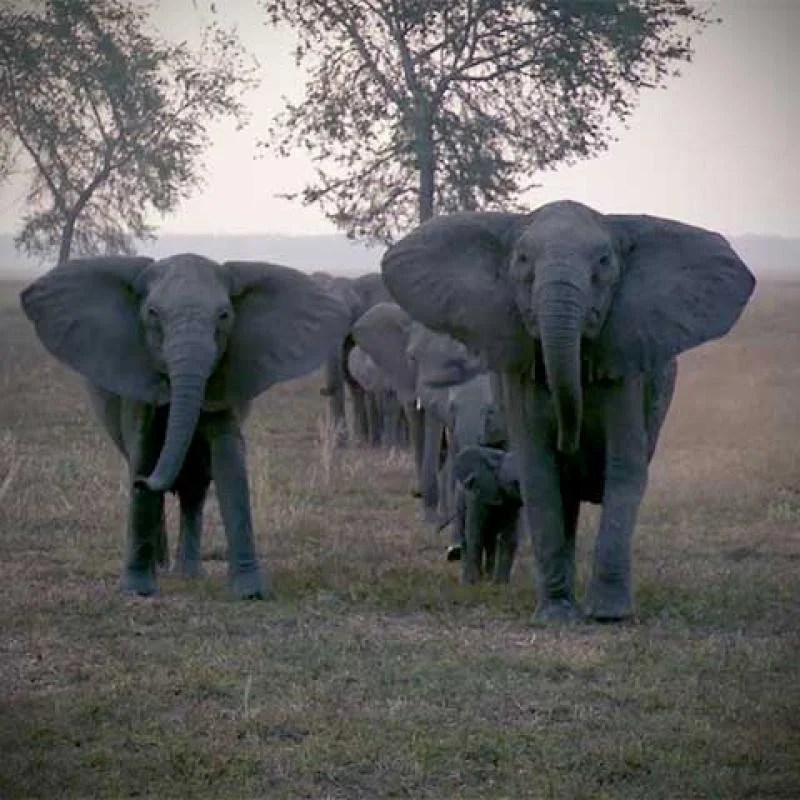Beginning with analyzing data on tuskless elephants answer key, the narrative unfolds in a compelling and distinctive manner, drawing readers into a story that promises to be both engaging and uniquely memorable.
Tuskless elephants, a unique and enigmatic subset of the elephant population, have captivated the attention of scientists and conservationists alike. This comprehensive analysis delves into the fascinating world of tuskless elephants, exploring their genetic makeup, environmental influences, and the profound implications of their tuskless trait.
Identifying Tusked and Tuskless Elephant Populations: Analyzing Data On Tuskless Elephants Answer Key
Tuskless elephants, a unique variation within elephant populations, lack the iconic tusks that are characteristic of their species. This absence of tusks raises intriguing questions about their genetics, environmental influences, and implications for both individual elephants and elephant populations as a whole.
Genetic and Environmental Factors Contributing to Tusklessness
Research suggests that both genetic and environmental factors play a role in the development of tusklessness. Genetic studies have identified specific genes associated with tusk size and shape, indicating a heritable component to tusklessness. Additionally, environmental factors such as nutrition, habitat, and exposure to toxins may influence tusk development.
Prevalence of Tusklessness in Elephant Populations
The prevalence of tusklessness varies across different elephant populations. In some populations, tusklessness is relatively common, while in others it is rare. For example, in the Addo Elephant National Park in South Africa, approximately 98% of female elephants are tuskless, while in other populations the percentage of tuskless elephants is much lower.
Analyzing Causes and Consequences of Tusklessness

Potential Causes of Tusklessness
The causes of tusklessness are complex and multifaceted. One potential cause is poaching, as elephants without tusks are less likely to be targeted by poachers. Natural selection may also play a role, as elephants with smaller tusks may have an advantage in certain habitats, such as dense forests where large tusks can be a hindrance.
Consequences of Tusklessness for Individual Elephants
Tusklessness can have significant consequences for individual elephants. Elephants use their tusks for a variety of purposes, including digging for food and water, defending themselves, and interacting with other elephants. Tuskless elephants may have difficulty accessing food and water, and they may be more vulnerable to predators and aggression from other elephants.
Broader Implications of Tusklessness for Elephant Populations and Ecosystems, Analyzing data on tuskless elephants answer key
Tusklessness can also have broader implications for elephant populations and ecosystems. Tuskless elephants may be less able to compete for mates, and they may have reduced reproductive success. This could lead to a decline in genetic diversity and population resilience.
Additionally, tuskless elephants may play a different role in ecosystem processes, as they may have different foraging behaviors and habitat preferences.
Conservation Implications of Tuskless Elephants

Importance of Tuskless Elephants for Genetic Diversity and Population Resilience
Tuskless elephants are important for maintaining genetic diversity within elephant populations. They carry unique genetic traits that may be lost if tuskless elephants are not protected. Additionally, tuskless elephants may be more resilient to certain threats, such as poaching and habitat loss, as they are less likely to be targeted by poachers and may be better adapted to changing habitats.
Conservation Status of Tuskless Elephants
The conservation status of tuskless elephants varies depending on the region. In some areas, tuskless elephants are relatively common and are not considered to be threatened. However, in other areas, tuskless elephants are rare and face significant threats, such as poaching and habitat loss.
Role of Conservation Organizations in Protecting and Managing Tuskless Elephant Populations
Conservation organizations play a vital role in protecting and managing tuskless elephant populations. These organizations work to reduce poaching, protect habitat, and conduct research to better understand the ecology and conservation needs of tuskless elephants.
Data Collection and Analysis Methods

Methods Used to Collect Data on Tuskless Elephants
Data on tuskless elephants can be collected using a variety of methods, including field surveys, genetic analysis, and remote sensing. Field surveys involve observing and counting elephants in their natural habitat. Genetic analysis can be used to identify individual elephants and determine their genetic relationships.
Remote sensing can be used to monitor elephant populations and habitat changes over large areas.
Strengths and Limitations of Different Data Collection Techniques
Each data collection technique has its own strengths and limitations. Field surveys can provide detailed information about individual elephants, but they can be time-consuming and expensive. Genetic analysis can provide valuable information about genetic diversity and relatedness, but it can be invasive and expensive.
Remote sensing can be used to monitor large areas, but it may not be able to provide detailed information about individual elephants.
Data Tables Comparing Tusked and Tuskless Elephant Populations
Data on tusked and tuskless elephant populations can be organized into tables to compare and contrast their characteristics. These tables can include information such as population size, sex ratio, age distribution, and habitat preferences.
Future Research Directions

Gaps in Our Understanding of Tuskless Elephants
There are still many gaps in our understanding of tuskless elephants. We need to learn more about the genetic and environmental factors that contribute to tusklessness, the consequences of tusklessness for individual elephants and elephant populations, and the role of tuskless elephants in ecosystem processes.
Innovative Methods for Monitoring and Studying Tuskless Elephant Populations
We need to develop new and innovative methods for monitoring and studying tuskless elephant populations. These methods could include using drones to collect aerial data, using camera traps to monitor individual elephants, and using genetic analysis to track elephant movements and relatedness.
Potential Applications of Research Findings for Conservation and Management Efforts
The findings from future research on tuskless elephants can be used to inform conservation and management efforts. This information can be used to develop targeted conservation strategies for tuskless elephants, protect their habitat, and reduce the threats they face.
Answers to Common Questions
What are the primary factors contributing to tusklessness in elephants?
Tusklessness can result from genetic mutations, environmental factors such as habitat loss and poaching, and natural selection pressures.
How does tusklessness impact the survival and behavior of individual elephants?
Tuskless elephants may face reduced survival rates due to difficulties accessing food and defending themselves, and they may exhibit altered social behaviors.
What are the broader implications of tusklessness for elephant populations and ecosystems?
Tusklessness can affect genetic diversity, population dynamics, and the ecological roles of elephants within their ecosystems.